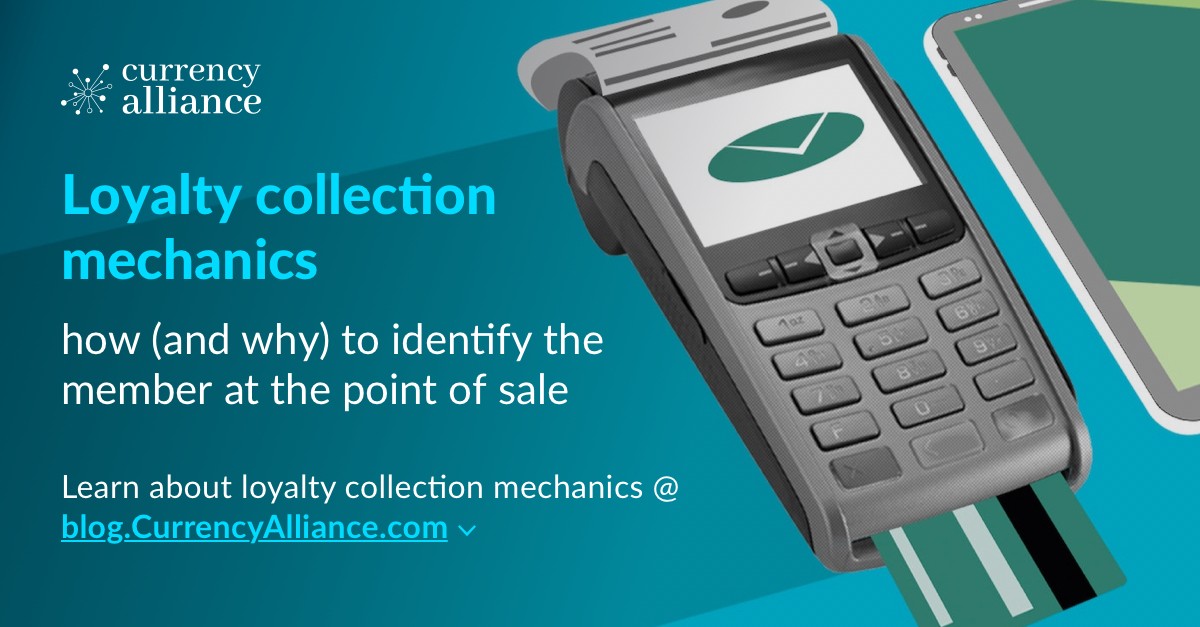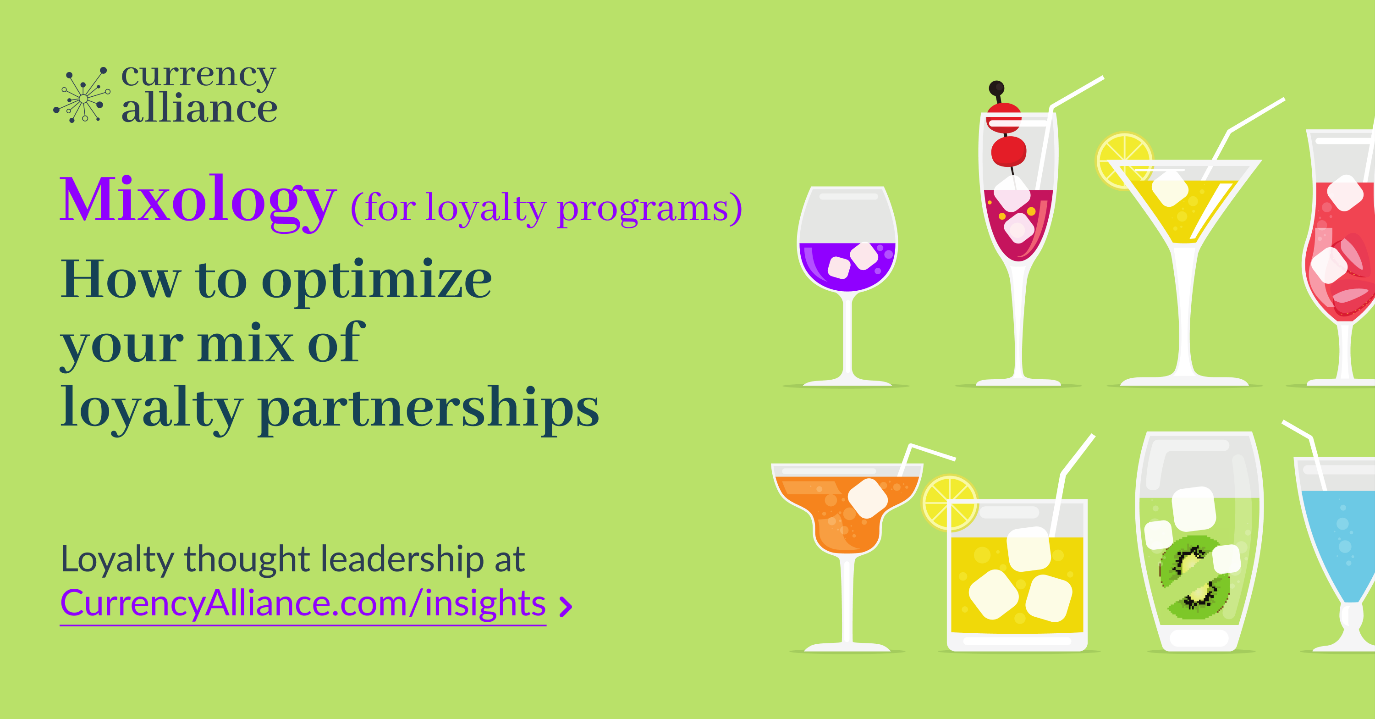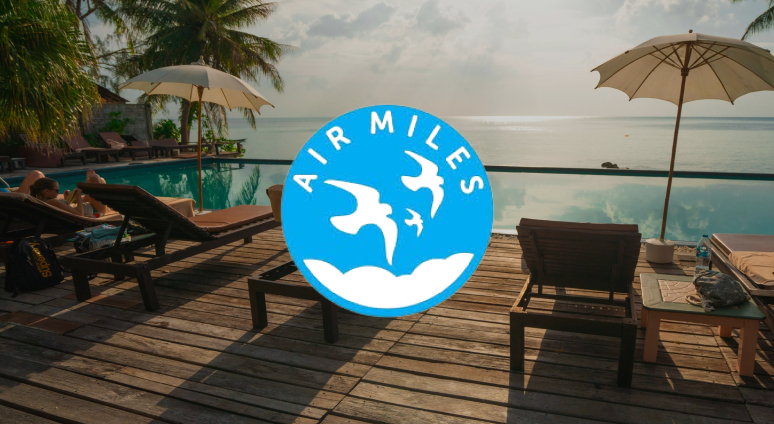Hotel loyalty: how to leverage local partnerships

Hotels with loyalty programs are finding out that significant incremental revenue can be generated from loyalty partnerships with local businesses in their neighborhoods.
When a guest wanders out into the neighborhood to find products or services – to dine, drink, relax or seek entertainment – they may consult Google, but they often make their decisions based on recommendations from the concierge or promotional marketing within the hotel.
This is a core part of the hotel’s value proposition. The ability for guests to tap local knowledge as an enjoyable part of their trip, and for local traders to lean on an enterprise brand in their neighborhood to support their businesses, has always been of importance.
Yet this is a value proposition where little money currently changes hands between stakeholders. In fact, those local businesses could be paying for the privilege of issuing the hotel’s loyalty currency, as loyalty partners, or using hotel facilities for the benefit of their own businesses.
And the opportunity of partnerships in the hotels’ local neighborhoods is not limited to incremental revenue or delivering greater value to guests.
After several years of healthy growth, and with occupancy rates higher, hotels must now ensure members can continue to achieve worthwhile rewards. Partners, especially local businesses, can create many opportunities while easing demand on hotels’ room inventory and service delivery capabilities.
Meanwhile, super-apps such as Uber are likely to soon capitalize on this same opportunity – which has been on hotels’ doorsteps for decades. This poses a real threat to travel brands’ longtime dominance of loyalty programs in consumers’ eyes.
By leveraging their local communities via loyalty partnerships, hotels can become more important, useful and valuable to customers than they have ever been before. This applies both to frequent and less frequent guests.
The valuable by-product of collaborating with more local partners is the customer insight they could yield: what the customer buys and with what frequency, or where they travel to. This can allow the hotel to better understand the member’s lifestyle interests and to improve profiling and personalization.
It’s these insights that will differentiate the dozens of guests, all paying about the same for a room, but with very different motivations for being at your hotel. Such insights can only come from your partner brands, and can be golden nuggets that allow you to establish more meaningful customer relationships at an emotional level.
The result will be capturing greater share-of-wallet while expanding your ecosystem to serve those customers most valuable to your business – a flywheel benefit that pays dividends for years to come.
The role of the hotel as a gateway to local services
With the vast majority of guests, the city or neighborhood – not the hotel – is their real destination.
Nearly all guests will need restaurants, mobility providers etc. during their stay. Tourists will need tour operators and sightseeing/entertainment recommendations, while business travelers may need local transportation, dry cleaning, haircuts, etc.
If all these services were accessible via the loyalty program, it could yield all the familiar benefits of operating a loyalty coalition:
- elevating the hotel’s customer value proposition, in such a way that increases direct bookings and reinforces loyalty
- incremental revenue for the hotel and its partners
- . . . and the collection of valuable additional customer insight.
Regarding incremental revenue: the loyalty program can create a financial incentive for both the hotel, and local partnered business, to refer customers to each other.
Many local businesses would gladly pay the hotel for the privilege of issuing the hotel’s loyalty currency, since this would likely incentivize hotel guests to make purchases.
For example: a restaurant’s direct cost of a $100 meal may only be $25 worth of ingredients; their real costs are in their overheads which are about the same whether the restaurant is empty or full.
So, to fill a table when the restaurant is quiet, they might be happy to issue $20 worth of points to the incremental customers from the hotel’s loyalty program. The restaurant still generates $55 in contribution margin that otherwise they never would have earned.
Similarly, the hotel might buy vouchers from the restaurant to issue gifts to special guests, paying almost nothing for a $20 voucher that creates guest value and drives incremental revenue to the restaurant.
In this way, hotels can generate many forms of incremental revenue depending on their location and the mix of services offered to guests. Some hotels could even make a portion of their revenue from customers that don’t book a room.
Furthermore, many local businesses have suppliers and clients that come to visit. The local business owner would be more likely to recommend their visitors stay at your hotel if you build a collaborative relationship.
One of the other major benefits hotels can get from such partnerships is the collection of valuable customer insight.
A partner transaction with a local beauty salon may not appear that exciting to the hotel. But someone who spends $100 on a haircut, during a 1- to 2-night stay in New York, would be a strong indicator they could be a very lucrative customer, hinting at a potential customer lifetime value of many thousands of dollars.
A broad range of similar partnerships with local, high-end businesses can help the hotel to understand their members’ lifestyle interests in far more detail, and allow them to focus their marketing energies on the most valuable customers.
So with all this potential, why has this opportunity gone largely untapped by most hotels?
Hotels have long provided recommendations for such local businesses but rarely have they included them in their loyalty programs and monetized those relationships – instead focusing on partnerships with enterprise airlines, credit card issuers and car rental firms.
When someone at the hotel is making money from such recommendations, it is usually the concierge getting a personal tip or commission – and the hotel is getting nothing.
A Deloitte study from 2018 – which is still relevant today – reported…
‘Spending on activities is often overlooked. The third-largest segment in travel, it accounts for 10% of global revenue (twice the size of the car rental market)… Hotels and online travel players have an enormous opportunity to integrate tours and activities into their digital ecosystems… to give travel brands an entirely new lens on their travelers’ preferences and interests.’
Local partnerships can safeguard the growth of hotel loyalty programs
Aside from the immediate benefits of collaborating with local partners, there are also longer-term, strategic reasons why hotels should consider this approach:
- retaining market share in the face of online travel agents (OTAs, super-apps, and competing loyalty programs)
- and enabling continued growth in member acquisition and value delivery – where partners can take pressure off the hotel when demand is high, or drive more demand for direct bookings when travel slows down.
The most capital-efficient way of addressing both challenges is for hotels to expand on their loyalty partnerships, with partners in the hotel’s neighborhood being a crucial part of the mix.
1. Retaining market share
OTAs already take up more market share than travel brands would like. Apart from the commissions paid, travel brands also begrudge the price-parity clauses which prevent them from offering better deals for direct bookings or liquidating distressed inventory.
To tackle this problem, 10,000 hotels have recently joined a class-action lawsuit against Booking.com – inevitably incurring significant legal costs. But hotels can also gain ground in this battle simply through better loyalty marketing.
This seems all the more important given that OTAs are now running effective loyalty programs of their own.
A while ago, I booked the Intercontinental Magnificent Mile hotel in Chicago for December 29th to January 1st through Hotels.com for $115 per night, whereas the cost on intercontinental.com (their direct channel) was $133 per night.
Granted, I may not get IHG points if booking through an intermediary, but I get $11.50 per night in the Hotels.com loyalty program – so the net difference in cost per night is about $25.
On top of that, IHG probably paid Expedia a 15% to 18% commission out of their $115 in revenue, which means they had additional margin to play with in order to capture the sale directly. IHG should keep the price at $133 per night, but give me $25 per night in loyalty points (rather than about 4%) to ensure they capture the direct booking. The hotel could use my direct engagement as the starting point to promote offers for other value-added services, and leverage partnerships, including in the local neighborhood, to capture more of my discretionary spending during my stay. Winning a direct relationship with me would almost certainly make me a more lucrative customer.
Airbnb has set a precedent for this, now doing good trade in the kinds of experiences that hotels might sell via loyalty partnerships. Equally, there’s no reason why an OTA couldn’t partner with the businesses local to the world’s top hotel locations, increase their share of wallet, and make it harder for the hotel to get an equivalent program off the ground. This could be shaping up as a battle for customer attention, based on who provides the greatest value across the entire cost of a trip.
Granted: the revenue from individual partner transactions may be low, but technology can now largely automate reconciliation and settlement to ensure ROI is positive.
Thomas Reiner, an investment analyst, recently said of Airbnb’s Experiences offering that “the economics aren’t great” for either partner. For the smaller partner/experience provider, “paying a $12-$13 commission on the $50 cooking class is a big chunk, which discourages partnering with online travel agencies.” For the travel brand meanwhile…
“…the servicing costs and the marketing costs for that experience aren’t going to be terribly different than they are on $500 hotel rooms, so the economics aren’t nearly as attractive.”
I would argue, however, that a lot of smaller experience- and service-based businesses have a lot of distressed inventory, and the variable cost of one more participant in an activity might be $5. So, any revenue above that leaves worthwhile contribution margin on the table for both the hotel and the partner.
Many restaurants are fairly empty on Sunday, Monday, or Tuesday evenings, so would be willing to accept the hotel’s loyalty currency with perhaps double the normal value to attract additional customers during their slower days of the week.
More importantly: such opportunities are compelling ways to enhance the perceived customer value proposition of the loyalty program, since the customer comes to view the hospitality provider not just as somewhere to sleep, but as a gateway to getting good value across the entirety of their trip.
If members can use the hotel’s loyalty points as their method of payment with the hotel’s various partners, this gives them more choice and freedom over how they engage – effectively making the points more valuable.
Many other businesses are now proactively competing for a greater share of the customer’s attention and spending in this way.
Super-apps are gradually building coalitions which consolidate customers’ local spending needs along with their relationships with enterprise brands. In Asia, Grab and Gojek – two mobility firms – have recently moved into financial services, lending to the local businesses with whom they work as delivery partners.
In the West, Uber has recently formed a loyalty partnership with Waitrose, a UK supermarket, building on its existing loyalty partnerships with airlines and train operators.
It’s a fairly small mental leap to see how, with a few more years of progress, one of these rapidly-innovating businesses could diminish the hotel’s role as first port of call for a traveller’s local needs. Ultimately, whoever has the eyeballs influences purchase decisions.
2. The risk of slowing growth in hotel loyalty programs
Hotel loyalty programs have been highly successful in recent years, by leveraging distressed inventory and partnerships with enterprise credit card issuers, making aspirational redemptions achievable for a large proportion of customers.
We estimate that if a customer spends $10,000 on flights with most airlines, they will earn between $130 and $150 worth of points. That won’t even buy a domestic flight anymore.
By contrast, a $10,000 spend on hotel rooms, when booking direct, will probably generate $600 to $800 in points value with the hotel loyalty program. That might represent 3-5 free hotel nights, and in the process, the member achieves an elevated status. With airlines devaluing their loyalty currencies, hotel group loyalty programs will represent even greater value over time.
So far, this has transpired as positive outcomes for hotels and guests alike, and if hotels play it right (and do not also join the devaluation game), they could attract a great deal more engagement. Customers have generally found it easy to achieve worthwhile redemptions, leading to their membership growth increasing significantly. Hotels, meanwhile, have seen reduced vacancy rates, more direct bookings, and reduced commissions paid to third parties like Booking.com or Expedia.
Some very detailed and helpful research by CBRE Group Inc., a real estate company, shows the positive effect of this improved customer frequency on hotels’ businesses.
“While loyalty fees have increased by 4.4%, the authors describe these costs as ‘modest’ – amounting to only 1.6% of revenues, or less than $6 per occupied room – and as having played a key part in maintaining guest satisfaction scores.”
Certainly, these loyalty fees and the cost of members’ perks will have been more affordable than increasing occupancy rates by any other means, such as discounts or paid advertising.
The question is: what next?
The rapid growth in hotel loyalty program membership during the past decade has largely transpired as growth in memberships, but not necessarily a consolidation around share-of-wallet. Total membership size is arguably a vanity metric, and further growth of this type may only lead to fragmentation and not move the needle much in terms of ROI or lifetime value.
And in an effort to meet demand, new hotel construction is at an all-time high across most of the major brands like Radisson, IHG, Hilton, or Marriott. But clearly, there are limits to the pace at which hotels can build or acquire new properties – and such big-ticket investments can be risky.
Some of the challenges faced by airline loyalty programs in recent years indicate why now is the time for hotels to start thinking ahead.
Until about seven or eight years ago, it was relatively easy for moderately-frequent members of airline loyalty programs to achieve a free flight or premium upgrade.
Yet during winter 2024-2025, The Financial Times, Skift and New York Times all ran news stories on how airlines were taking a lot more direct revenue, reducing distressed inventory, and meaning that even some of their most loyal customers couldn’t achieve a free redemption on desirable flights.
Of course, every business would rather have cash sales. The problem for some airlines is that they dropped the ball in cultivating a range of alternative redemption options that might reduce demand on their inventory. As a result, a lot of customers ran up large points balances, while little new seat inventory appeared, leading to devaluation events and higher churn of valuable members. The success of a company called Status Match demonstrates there are a lot of frustrated customers shopping around.
Hotels still have time to avoid a similar crunch occurring in their businesses, when more members figure out how much more valuable their points are than those of a typical airline.
One way they can anticipate this problem is by allowing customers to exchange their hotel points out into other enterprise loyalty programs – but most members would prefer to ‘exchange up’ into a more aspirational program, and it doesn’t get much more aspirational than a few free nights at a nice hotel. Airlines simply don’t have the seat inventory on desirable routes to make such redemptions in their programs appear good value. Of course, this can change when global travel sputters due to economic uncertainty. But even then, people with a lot of points might not want to travel much either during these times, meaning alternative redemption alternatives from partners become even more compelling.
Meanwhile, hotels can immediately start striking up accrual and redemption partnerships with local businesses, with very little friction, and at pace. This will mean that nearly every guest can get access to a wide range of interesting redemption options, at different price points, giving nearly every guest a good reason to stay engaged with the program.
Such tactics have been key to the recent success of various hotel programs. Accor Live Limitless, for instance, allows members to redeem their points on concerts, dining and sports; Choice Hotels’ Smart Privileges program allows customers to burn points with Starbucks or Uber.
Perhaps part of the reason that hotels have not seized on this is that dealing with a lot of small partners seems too complicated; indeed, the same Deloitte study we referenced above said…
‘The market is incredibly fragmented, lacks standardization, and is digitally inept. It’s comprised of a long tail of small suppliers (more than half generate less than $250,000 in annual revenue) who still power their businesses with phone calls and paper ticketing. In fact, more than 80% of gross bookings are made offline.’
…but actually, since that study was written in 2018, this has become much less of an obstacle since small businesses are now much better digitally connected – and the costs of loyalty technology have fallen significantly.
Currency Alliance in particular has developed the Universal Points Terminal (UPT), which caters to physical retailers who want to engage in loyalty marketing without the need to integrate their POS – which is always a challenge.
Of course, alternatives like participating in cashback schemes or affiliate marketing also exist for companies too small to integrate POS systems with loyalty partners, but those channels cost at least double what it costs to collaborate directly with a loyalty program using the Universal Points Terminal.
And, for the local merchant, getting access to tens of millions of members in a hotel’s loyalty program at very low cost improves their profitability in a fiercely competitive market.
An optimal local partner network, and the technology required
Partnerships allow the hotels to tap into the very broad interests of their large member bases and ensure that nearly all members can easily earn and redeem their points.
Every enterprise loyalty program should have both enterprise partners and SME partners, probably numbering in the dozens (possibly hundreds) in many cases.
Hotels should seek to replicate this in the neighborhoods local to their properties. For global brands, this may involve hundreds or thousands of local partnerships that are mostly relevant to hotels in a particular region. This is now easily manageable at scale.
Food and drink is one obvious category. You can already exchange various airline loyalty currencies into vouchers for restaurants of all types.
This is less common among hotels because they often operate their own restaurants. But you know the guest will probably not want to eat in your hotel every night (or at all), so participating with local restaurants allows you to earn at least some incremental revenue, and collect some data, whereas otherwise you may have gained nothing. And you can always adjust the reward value so that guests get the best value in your restaurant.
Similarly, entertainment venues and tour operators will inevitably make popular loyalty partners for your guests. Live Nation/Ticketmaster already allow members of various enterprise loyalty programs to exchange their points for concert tickets, and recently, stadiums and music venues have begun approaching Currency Alliance to enable similar arrangements.
And in mobility, national or global businesses like Uber, Gojek, Lime, Lyft etc. will all likely be interested to allow guests to redeem their points on their taxi rides, bicycles, e-scooters and food delivery, if it means they can win preference over competitors.
Beyond enterprises: many SMEs, such as an ice cream parlor, a white water rafting experience company, a hairdresser, a dry cleaner and many others would also sell you vouchers at a discount, to offer as rewards for your guests.
A classic example of this is the Tesco partnership with Pizza Express in the UK. Tesco ClubCard members can redeem a modest number of points for a £7.50 voucher at Pizza Express. Pizza Express is probably selling those vouchers to Tesco for around £2 – because they know that a customer will bring 3 friends and spend over £80 on a meal. Issuing vouchers in this way is a great way to acquire incremental revenue on high-margin offers from your partners.
Each individual redemption could earn your hotel a small amount of revenue, but yield incredibly useful insights on your guests, reveal customers with higher disposable income, and allow you to target your marketing with the greatest expectation of further ROI.
How to manage many partners at scale
Working with a lot of smaller partners is now perfectly manageable with the right technology.
These smaller businesses are now far more digitally connected than they were previously; ePOS devices, e-receipts, mobile payments, account linking, card-linking and QR codes are now widespread. This means that they already have the technology to surface your loyalty program’s touchpoints in their own digital environments, issuing more of your points, accept your points as payment, or process vouchers in your loyalty app.
For any partners who have a website: Currency Alliance’s white label screens enable similar types of engagement in any digital customer experience or ecommerce environment. And as mentioned above, our Universal Points Terminal enables this in offline settings.
And for larger brands which already have their own loyalty programs: if they connect with Currency Alliance, you can partner with their loyalty program in a few clicks via our Loyalty Partnerships MarketplaceTM, without the need to understand the complexity of their loyalty systems and attempt a direct integration. You can then manage the relationship affordably and cost-effectively in our platform.
Hotels: scale your local partner networks quickly, before somebody else does
It has been my experience that many of the owners of neighborhood businesses have never actually visited the hotels in their area.
Now’s the time to start paying attention.
Beyond loyalty programs: many companies are now looking at customers’ wider shopping needs as opportunities to collect customer data and drive incremental revenue.
OTAs are working to offer ‘the connected trip’ – i.e., selling the customer all their transport services required during their trip, rather than just the flight and the hotel. Airlines are talking in terms of ‘modern retailing’: borrowing tactics from ecommerce such as product bundling, and advanced offers and personalization in order to create a more value-added transactional environment.
And in the hotel industry, a phenomenon called ‘attribute-based selling’ is now trending, whereby the hotel is looking in more detail at guests’ needs in order to match them with the perfect room. There’s no reason this couldn’t also apply to the promotion of local services and experiences – and doing so would allow the hotel to target future offers with ever-greater precision.
Historically, the hotel reception desk has served as a default point of call for a guest seeking local services or experiences (though about 2% of hotels have a dedicated concierge).
Hotel receptions are overworked during peak hours and have little to do during the rest of their shift. Technology can now be a huge asset to all types of hotels so staffing needs can be flattened throughout the day and guests can largely serve themselves.
Very quickly, many other companies will start capitalizing on customers’ needs for information by packaging up partner offers in a way that can be easily monetized. If new content distribution channels offer customers the convenience of seeing many partner offers aggregated in one place, it will be all the harder for hotels to be the key entry point to the neighborhood, and to monetize this while creating incremental value for guests.
The commercial opportunity in hotels’ neighborhoods is there for the taking. The only question is whether the hotels get there first, or other businesses, which manage to scale their partner networks more quickly, take that opportunity to deepen their relationship with travelers.
Customers have limited attention spans, so owning the ‘entry point’ to influence decisions is critical. The winning entry points will be those with the best content and value – built on expanding ecosystems of collaborating, complementary brands.






